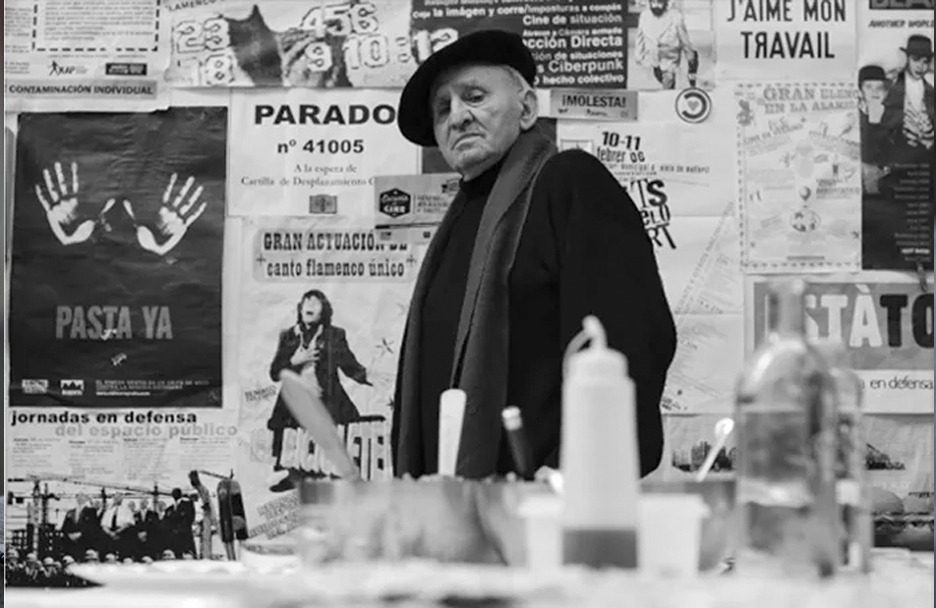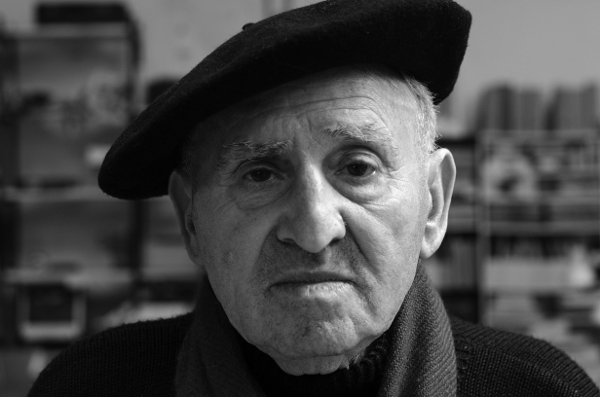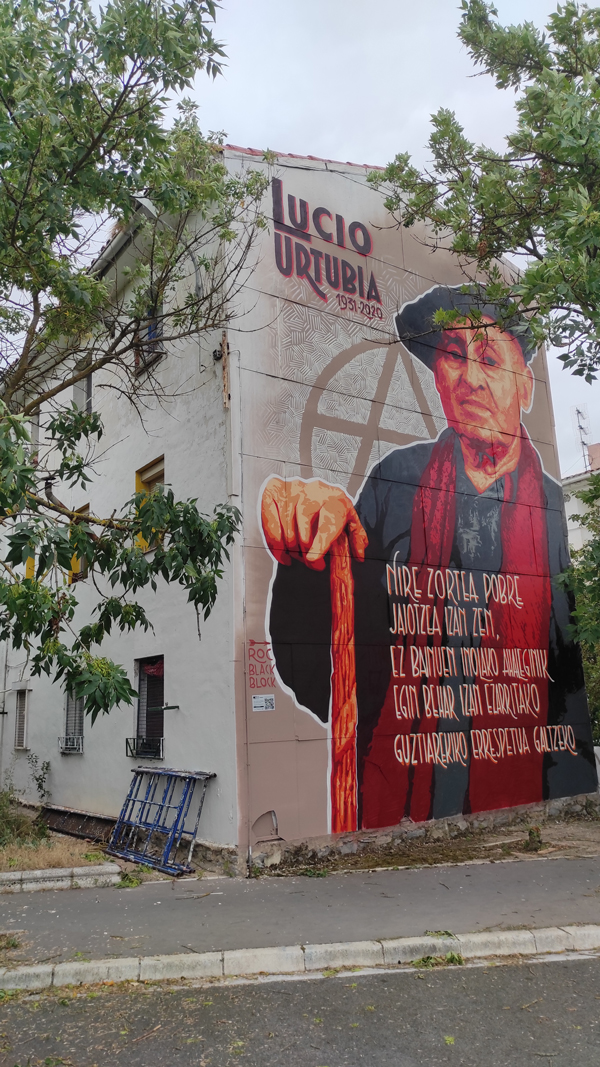HISTORICAL CONTEXT
Anarchist and almost illiterate, the Navarrese Lucio Urtubia was the most wanted criminal during the eighties; capable of shaking the First National City Bank. Urtubia was born in the town of Cascante (Navarre) on February 18, 1931, into a very poor family of five siblings. His father, a Carlist by family tradition, became a socialist (he held a position in the Ucohesion, and was deputy mayor for the PSOE), and after some time in prison, he became a communist. It was from his father’s mouth when he first heard the word that would mark his life: “If I were born again, I would be an anarchist.”
When he was recruited for the military service, he began smuggling goods on the French-Spanish border with other comrades of the service. When he was discovered in 1954, he deserted and fled to France, as the crimes he had committed could carry the death penalty. “There I learned that you can win 99 times, but that if you lose one alone, you can give a damn. That is, the revolutionary can never fail and you can’t get caught,” he said.

In Paris, he worked as a builder, a job he would pursue much of his life. He began to associate with the Libertarian Youth of the Fédération Anarchiste, at first to learn French, but quickly with full conviction and the relationships he was able to establish and forge there with intellectuals such as André Breton and Albert Camus. “While living in Paris, the anarchist Germinal García asked me to hide three Spanish revolutionaries. One of them turned out to be the legendary Quico Sabaté. When I found out who it was…! Because at that time, El Quico was already very well known among us. In Franco’s Spain, he was the regime’s number one public enemy, but for me, he was God” Urtubia recalled in an interview.
Urtubia witnessed many historical events that took place during the second half of the twentieth century, when he also lived the May of 68. He also supported, with his participation, the regime of Fidel Castro and participated in all kinds of anti-Franco activities. His home in Paris was a refuge not only for libertarians, but for all kinds of militants: members of ETA, montoneros, tupamaros, activists of the Italian Red Brigades or the Direct Action. But without a doubt, his “big hit” was him during the second half of the 1970s, when he managed to swindle (“expropriate” and “recover,” he said) the First National Bank (now Citibank) 20 million euros at the time flooding the market with thousands of counterfeit traveller’s checks; to invest the money in the causes he believed in.

WORK PROCESS
The Errekaleor neighbourhood has been an occupied space since 2013, the largest occupied space on the Peninsula. Today, more than a hundred people live there. A liberated, anti-capitalist, feminist and assembly space. A space of reference in the State, which was projected on the international stage when, as a result of the legal proceedings initiated against the group, the neighbourhood had cuts in electricity supply. In 2017, the Iberdrola company, guarded by Ertzaintza, cut off the light. After a strong defence of the space and a micro-funding campaign, the group installed solar panels that turned the neighbourhood into an energetically autonomous area.
The neighbourhood also stands out for having mural interventions in the medians of the buildings, with works by Blu, Escif, and other artists.
After some unsuccessful contact by Roc Blackblock with Errekaleor, it was a member of the collective who contacted the artist in August 2020 to invite him to paint. This contact was made a month after the death of Lucio Urtubia.
We did not overlook that Errekaleor is a small large open-air museum, with many large-format mural interventions, with content consistent with the project, with artists, also committed to the philosophy of space and of large quality. Accompanying works by artists such as Blu or Escif is a great privilege for us.
The inclusion of the anarchist “A” generates an interesting debate on the wall, Errekaleor’s project is diverse and involves people from very different political backgrounds, of course not everyone feels identified with anarchism. The reason for painting it was the clarity with which Lucio always identified himself as an anarchist, unequivocally. Aware that it was not a consensual issue and with the desire to generate consensus and confluence spaces, we suggested that if it was going to be a problem, we could replace the “A” with other elements. The consensus in the arguments for which we decided to include it and the respect and admiration for Lucio Urtubia, beyond the tendency or political affiliation of each one, allowed us to leave the mural as we conceived and painted it. The dialogue and consensus agreed by all of what could have been a source of tension is one more example that other ways of organising and making decisions are possible, and this is also part of the ideology to which Lucio Urtubia devoted his life.

